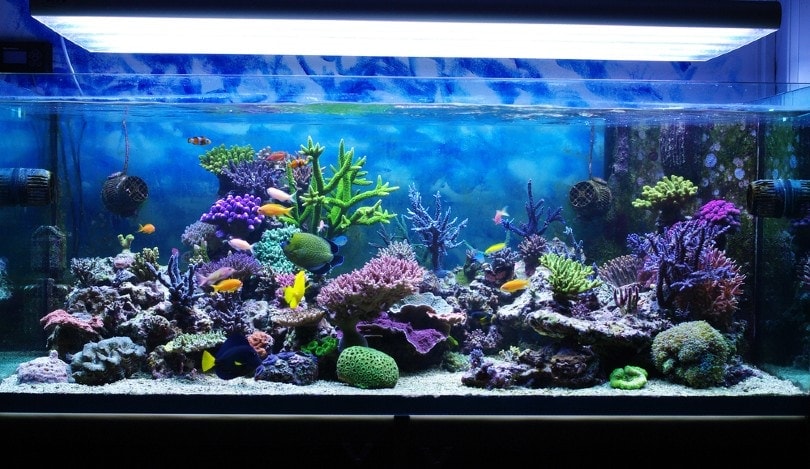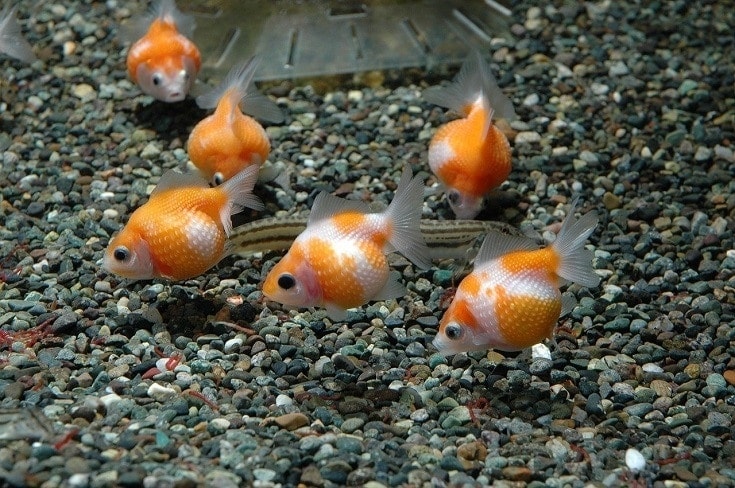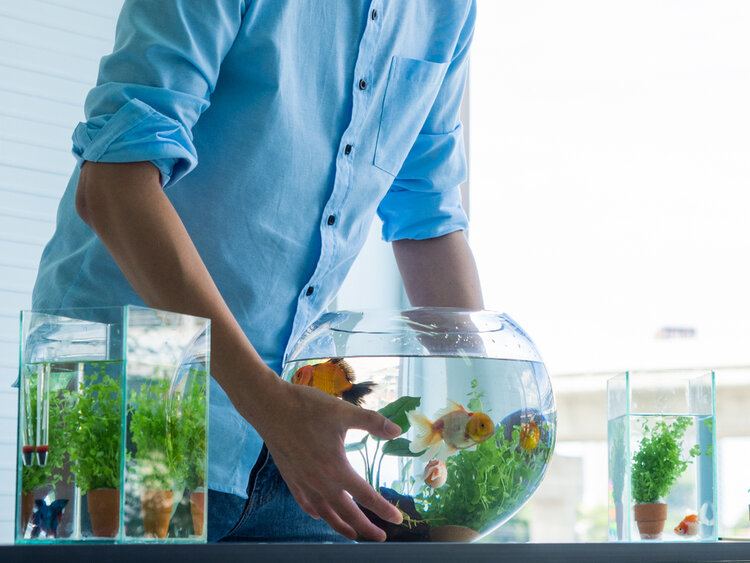Red Cap Oranda Goldfish: Pictures, Care Guide, Varieties & Lifespan
Updated on
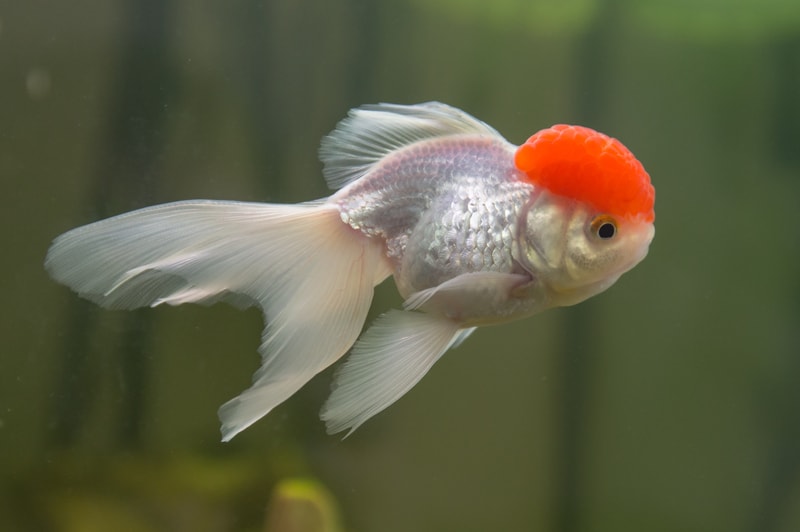
Click to Skip Ahead
The Red Cap Oranda goldfish is one of the most unusual and beautiful of all the goldfish varieties. They’re playful, friendly with other fish, relatively easy to keep, and a wonderful addition to any freshwater aquarium. If you want to add Red Cap Oranda goldfish to your tank, we’ll explain everything you need to know to get you started on the right fin!
| Size: | Up to 7 inches long |
| Lifespan: | 10–15 years |
| Similar Breeds: | Pearlscale, Lionhead, Ryukin, Bubble Eye, Black Moor |
| Suitable for: | New or experienced fish owners |
| Temperament: | Calm, friendly |
There’s no missing the red protuberance at the top of the Red Cap Oranda goldfish’s head. It looks like a brain, but it has nothing to do with their brain. The technical term for it is a “wen.” Aside from their attractive, if unusual, look, it’s worth noting that the Red Cap Oranda goldfish is an excellent tank-mate that gets along with other species in their tank. However, putting them in a tank with other friendly fish is necessary so that they aren’t bullied. The problem is that they move rather slowly, and other fish often steal their food.
Red Cap Oranda Goldfish Breed Characteristics
What Is the Cost of a Red Cap Oranda Goldfish?
You’ll be pleased to know that the Red Cap Oranda goldfish is a relatively inexpensive fish you can usually purchase for less than $10. However, if you get a mature and larger Red Cap Oranda, you can expect to spend between $20 and $30.
The Red Cap Oranda goldfish Is part of the carp family. They originated in China and Japan, where they have a thriving aquarium industry. As mentioned earlier, the brain-like growth on top of their head is called a wen and makes them stand out from other goldfish. Red Cap Oranda goldfish are also known to be one of the earliest “fancy” goldfish bred for the aquarium hobby market.
What’s fascinating about these fish is that, in China, their scales are revered as a sacred sign from Buddha. They’re always clean, no matter how polluted the water is where they’re kept. Today, Red Cap Oranda goldfish are proudly kept worldwide.

Sociability of the Red Cap Oranda Goldfish
Like almost all goldfish species, the Red Cap Oranda Is sociable and gets along well with almost every other species. They don’t bother or bully other fish, but if given the opportunity, they will eat small fish that they can easily fit into their mouths.
Since they’re slow swimmers, they’re vulnerable to bullying from other fish that often steal their food. Also, they have very delicate fins like other species of goldfish and are often the victims of fin tears and bites from other, more aggressive fish. Putting them with similarly calm and friendly fish is essential.
Do These Fish Make Good Pets?
Red Cap Oranda goldfish indeed make good pets. They’re attractive, fun to watch, get along well with other fish, and are easy to care for. They eat several types of food, including pellets and flakes, and live relatively long lives.
Although some online sources say that it’s important to have experience if you want to keep Red Cap Orandas, as long as you keep a clean tank, feed them correctly and regularly, and ensure that other living conditions are optimal (temperature, pH, etc.) keeping these beautiful fish shouldn’t be difficult.
Does This Fish Make a Good Tank-mate?
Yes, the Red Cap Oranda makes a good tank mate. They get along with most other fish species but tend to get bullied because they’re slow swimmers. As long as they aren’t in a tank with tiny fish, you should have no problems.
Care Guide & Tank Set Up
Water Quality, pH & Temperature
Regarding water quality, Red Cap Orandas need the H2O to be as clean as possible (like most other species). The temperature in their tank should be held between 65°F and 72°F, with a pH level between 6.8 and 8.0. It’s important to mention that the Red Cap Oranda can also be kept in an outdoor pond, where the temperature should be watched carefully and kept in the same range. The temperature is probably the most important of all the parameters for keeping these lovely fish.
Substrate
The Red Cap Oranda is a fish that likes to dig and look for food in the substrate, so choosing one that isn’t sharp is a must. Two of the best are sand or rounded gravel, which will allow your goldfish to dig but prevent any injuries to their delicate bodies, especially their dainty wens.
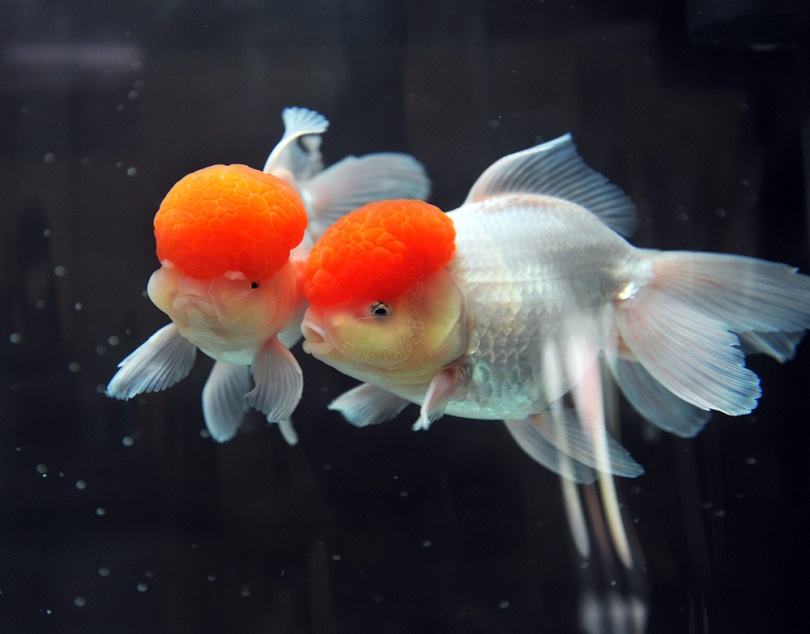
Plants
Depending on your taste in plants, and your experience level, you can put fake or live plants in with your Red Cap Orandas. If you choose to add live plants, you should choose hardy species since your goldfish will be nibbling on them occasionally. Some of the best plants for Red Cap Oranda goldfish include the following:
Lighting
As with many fish species, your Red Cap Orandas will need between 8 and 12 hours of light daily. This can be natural light if their tank is set up near a natural light source or artificial with a UVB tank light. If you decide to use artificial light, it’s essential that you also purchase a timer so your pets get 12 hours of light and 12 hours of darkness every day.
Filtration
Goldfish create a heavy bioload because they eat a lot of food and thus make a lot of fish poop, Red Cap Orandas included. It’s best to purchase a filter system that’s stronger than necessary for their tank. For example, if you have a 30-gallon tank, buy a filtration system that can handle 50 gallons. The stronger the filtration system, the better for your goldfish, as it will keep their water cleaner, and clean water is vital for their health.
Things to Know When Owning a Red Cap Oranda Goldfish
Food & Diet Requirements
Red Cap Orandas are omnivores, which means they eat a wide variety of plant and animal foods. Fish flakes and floating pellets are a good choice as they float or sink slowly, allowing your slow-moving Red Cap Orandas to eat them at their leisure.
As omnivores, you can also feed your Red Cap Orandas several vegetables and some fruits. Kale and lettuce are excellent choices and can be left in their tank all day to give them something to nibble on. As for animal protein, brine shrimp (fresh or frozen) are a good choice.
One important thing to remember is that any uneaten food should be removed from your pet’s tank to prevent an even heavier bioload from forming and overloading the tank’s filtration system.
Size & Growth Rate
Red Cap Orandas grow relatively slowly, depending on the size of their tank. However, they can get quite large, often reaching 8 to 9 inches long. Compared to the average aquarium fish, that’s very large and may necessitate a larger tank.

Varieties
The Red Cap Oranda has a bright, red, or orange wen, with a body that is either orange or white. There are also Black, Blue, and Panda Oranda goldfish, with wens that match their respective colors. Panda Orandas, for example, have black and white wens and bodies. They’re also one of the more eye-catching species!
Lifespan and Health Conditions
Red Cap Orandas don’t suffer from many health issues, but one of the most common is ich. Ich is typically caused by stress and poor water conditions. Severe or constant pH balance and temperature fluctuations can also cause this common fish disease.
Another health issue that Red Cap Orandas often face is their wen growing too large. In some cases, it gets so large that they can’t see and are unable to eat. If this occurs, you need to speak with your veterinarian about medication that will prevent their wen from growing further.
Many health issues are caused directly by dirty water, poor filtration, and constant changes in either temperature or pH level. Clean water is critical if you want your Red Cap Orandas to live long, healthy lives!
- Overgrown wen
- Parasites
- Fungus
- Bacterial infections
- Ich (protozoan parasites)
- Swim bladder disorder
Male vs Female
There are only a few differences between male and female Red Cap Orandas. Males, for example, usually have smaller, skinnier bodies than females. Males also tend to have longer and more flowing fins than their female counterparts. Females often look rounder, and their abdomen looks softer than males. Lastly, the anal fin in females is further away from the tail than in males.
3 Little-Known Facts About Red Cap Oranda Goldfish
1. Red Cap Oranda goldfish can live as long as 20 years.
That’s longer than most dogs and cats!
2. You won’t find Red Cap Orandas in the wild.
They were bred in China for the Emperor’s fishponds.
3. They are thought to be a cross between the Japanese Fantail goldfish and the Lionhead goldfish.
That’s why Red Cap Orandas have large wens and long, silky fins.
Final Thoughts
As one of the most popular and recognizable of all goldfish species, the Red Cap Oranda is amiable, lovely, and easy to keep as long as their tank is kept clean and the temperature and pH are stable. Red Cap Orandas have been around since they were first bred in China in the 1700s and are prized in Japan and China.
We hope the information in this article has given you all you need to know to keep Red Cap Oranda goldfish in your aquarium or pond. They are truly lovely creatures and will add a splash of color and life to any aquarium!
Featured Image Credit: Maslov Dmitry, Shutterstock


